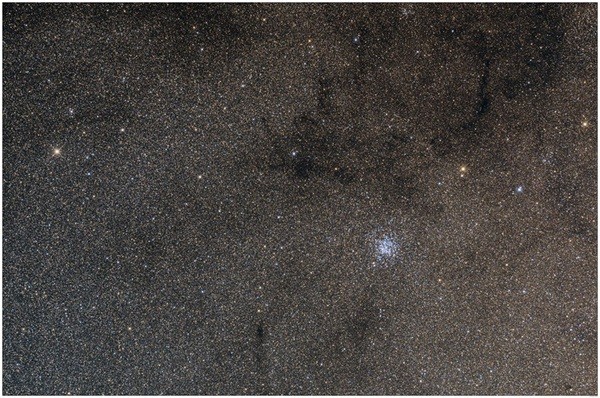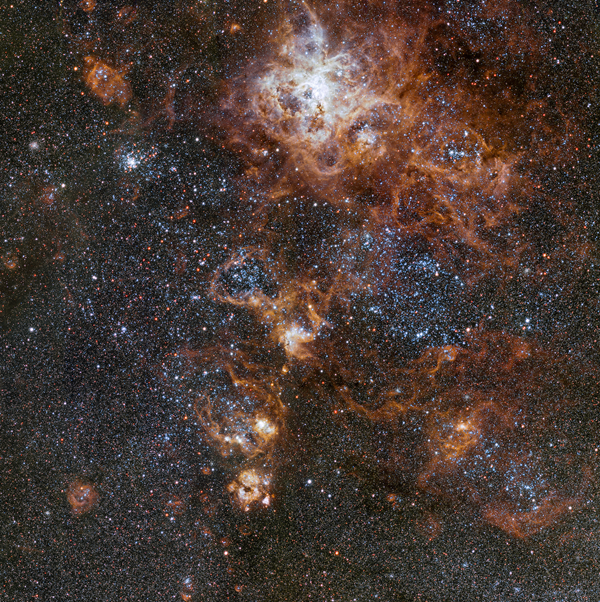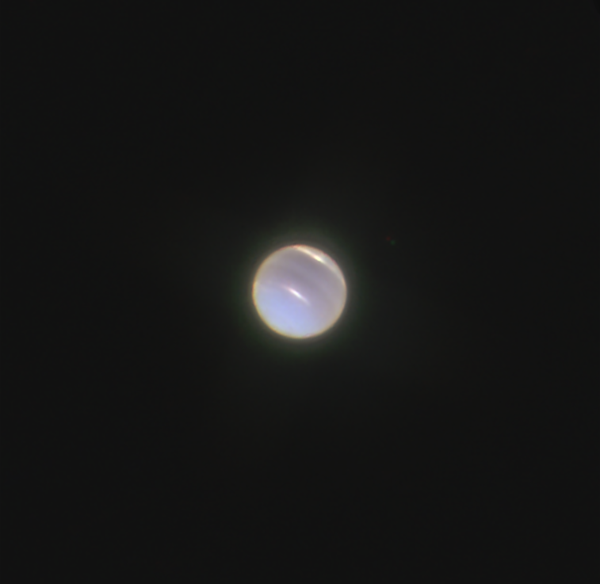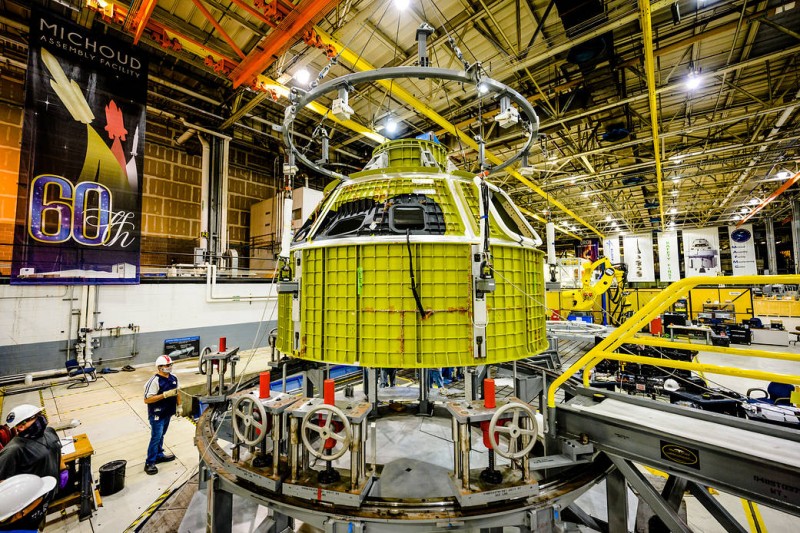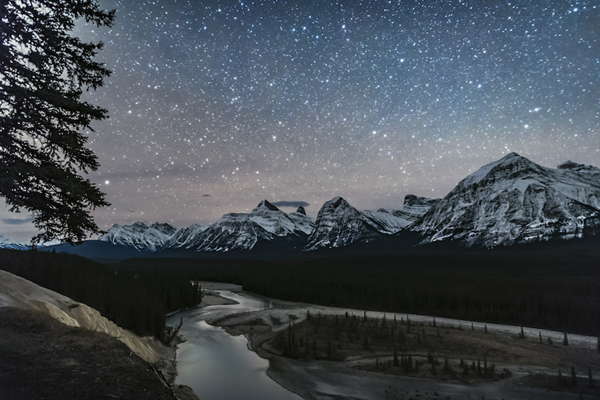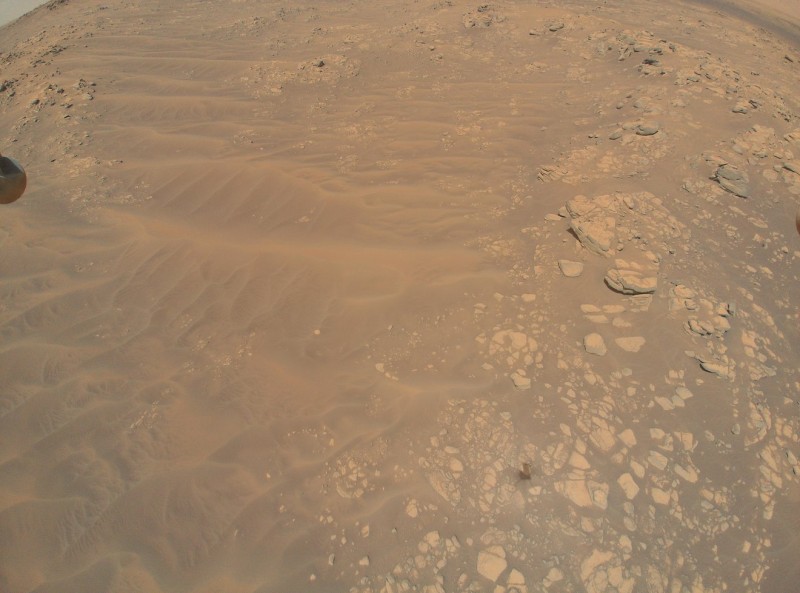Blog
Image of the Day
Wednesday, September 22nd 2021 04:27 PM
Time capsules from the birth of our Solar System more than 4 billion years ago, the swarms of Trojan asteroids associated with Jupiter are thought to be remnants of the primordial material that formed the outer planets. The Trojans orbit the Sun in two loose groups, with one group leading ahead of Jupiter in its path, the other trailing behind. Clustered around the two Lagrange points equidistant from the Sun and Jupiter, the Trojans are stabilized by the Sun and its largest planet in a gravitational balancing act. These primitive bodies hold vital clues to deciphering the history of the solar system, and perhaps even the origins of organic material on Earth.
NASA's Lucy will be the first space mission to study the Trojans. The mission takes its name from the fossilized human ancestor (called “Lucy” by her discoverers) whose skeleton provided unique insight into humanity's evolution. Likewise, the Lucy mission will revolutionize our knowledge of pl...
Read More
Read More
A New Understanding of Galaxy Evolution with NASA’s Roman Space Telescope
Tuesday, September 21st 2021 04:15 PM
This portion of the Hubble GOODS-South field contains hundreds of visible galaxies. A representative sample of those galaxies on the right half of the image also have their spectra overlayed in a representation of slitless spectroscopy. By using slitless spectroscopy, a spectrum is obtained that contains both spatial and wavelength information. For example, the inset highlights a spiral galaxy that shines brightly in the emission line of hydrogen-alpha (Ha) as well as in broad starlight (the horizontal strip of light). Its spiral shape is traced by the Ha portion of the spectrum. By combining imaging and spectroscopy, astronomers can learn much more than from each technique alone. Credit: NASA, ESA, and J. DePasquale (STScI)
When NASA’s Nancy Grace Roman Space Telescope launches in the mid-2020s, it will revolutionize astronomy by providing a panoramic field of view at least 100 times greater than Hubble's at similar image sharpness, or resolution. The Roman Space Telesc...
Read More
Read More
The Sky This Week: Keep an eye on the Moon
Monday, September 20th 2021 04:47 PM
Messier 11: The Wild Duck Cluster, also cataloged as M11, is a bright open cluster that stays relatively visible even when the Moon is up.
Friday, September 17
The Wild Duck Cluster (M11) is a great target this evening. Located in Scutum, it’s still relatively high in the south after sunset. You can find M11 by dropping 1.8° southeast of 4th-magnitude Beta (β) Scuti, also known as 6 Aquilae.
M11 is a bright, rich cluster of nearly 3,000 young stars estimated to be between 220 million and 250 million years old. With a visual magnitude of about 6, a keen-eyed observer might just be able to see it from a dark location — although the Moon may interfere with any attempts to find it without optical aid this evening. However, with either binoculars or a wide-field telescope, this beautiful cluster is easy to find and a real crowd-pleaser. It stretches about 14' across and its brightest stars form a rough v shape, which is how the cluster earned its name...
Read More
Read More
These are the most peculiar galaxies you can observe
Thursday, September 16th 2021 04:36 PM
M82 is a nearby galaxy forming stars 10 times faster than the Milky Way. This prodigious rate of production is due to gravitational interactions with its neighboring galaxy, M81.
Forty years ago, I penned my first of many articles for Astronomy. It ran in the February 1981 issue as “Observing Peculiar Galaxies.”
The term peculiar galaxies refers to a class of galaxies whose distorted shapes resemble neither classical spiral galaxies nor amorphous elliptical galaxies — and at the time, they were still mysterious. Just 16 years earlier, Halton Arp had published his Atlas of Peculiar Galaxies, a product of his documentation of objects while examining the Palomar Sky Survey. It contained a sampling of some the most unusual galaxies whose warped structures defied explanation.
After the passage of four decades, our understanding of what makes such galaxies peculiar has improved — thanks to the Hubble Space Telescope, giant new telescopes with adaptive optic...
Read More
Read More
Untangling the Tarantula Nebula, the sky's largest stellar nursery
Tuesday, September 14th 2021 04:26 PM
The Tarantula Nebula is one of the most stunning objects in the southern sky: a vast web of gas shrouding stars bursting into life. Studying them could be key to understanding conditions in the early universe.
In 1799, French soldiers unearthed a large black rock near the Egyptian town of Rosetta (now Rashid) in the Nile delta. Inscribed on its flat face were three versions of a single decree from 196 b.c. affirming the royalty of 13-year-old Ptolemy V: one in ancient Greek, one in the everyday language of the Egyptian people, and one in hieroglyphs. The Rosetta Stone provided the key for understanding ancient Egyptian hieroglyphics, and ultimately the great civilization that created them.
Some 50 years before Napoleon’s troops found the Rosetta Stone buried in the ground, another French explorer made an equally stunning discovery not beneath their feet, but above their heads. In 1751, astronomer Nicolas-Louis de Lacaille was surveying the deep southern sky from the Cap...
Read More
Read More
The Sky This Week: Neptune reaches opposition
Monday, September 13th 2021 04:36 PM
Cold, lonely Neptune: This slightly unusual view of Neptune shows the distant planet in red and near-infrared light from the Hubble Space Telescope.
Friday, September 10
Asteroid (2) Pallas reaches opposition at 10 P.M. EDT tonight. The large main-belt world is currently located in Pisces; it’s rising as the Sun sets and will be visible all night. Pallas glows softly around magnitude 8.5 — easy for binoculars or a small scope to pick up. You’ll find it about 4° south-southwest of 4th-magnitude Gamma (γ) Piscium. Pallas takes 4.6 years to circle the Sun from its location between Mars and Jupiter.
While you’re in the area, shift your gaze north of the Circlet in Pisces to find the Great Square of Pegasus: a large asterism comprising Alpha (α), Beta (β), and Gamma Pegasi, along with Alpha Andromedae. The Great Square outlines the body of the Winged Horse on the sky, while his neck arches away from Alpha Pegasi (also called Ma...
Read More
Read More
Image Of The Day
Friday, September 10th 2021 04:14 PM
The pressure vessel is the primary structure for Orion’s crew module, joined together using state-of-the-art welding by technicians from lead contractor Lockheed Martin.
Both the Orion spacecraft and the Space Launch System (SLS) rocket are making progress towards Artemis missions to the Moon. With the spacecraft for the Artemis I and II missions manufactured as part of the design and development phase, the Artemis III pressure vessel is the first crew module structure off the line in the long-term production phase. Next, it will ship to NASA’s Kennedy Space Center where teams will begin integration of Orion’s systems.
Orion, SLS, and the Exploration Ground Systems are foundational elements of NASA’s Moon to Mars exploration approach. Artemis I will be the first integrated flight test of Orion and SLS and is targeted to launch later this year. Artemis II will follow as the first crewed mission, taking humans around the Moon and back to Earth to pave th...
Read More
Read More
Sky This Month: September 2021
Wednesday, September 8th 2021 04:21 PM
This starlit shot of the Athabasca River in Alberta, Canada, features the constellations Aquarius, Piscis Austrinus, and Cetus. This same region of the sky hosts Neptune this month.
Six major planets are in view before midnight during September, offering a full range of binocular and telescopic sights. Mercury and Venus hug the western horizon soon after sunset, while Jupiter and Saturn provide a dazzling spectacle in the southeast. Both planets are well placed all evening. Uranus and Neptune are best viewed in binoculars or a telescope.
Elusive Mercury tries to hide from us, but dedicated observers should successfully find it in evening twilight. Mercury is not particularly well placed for Northern Hemisphere observers as it reaches its greatest elongation east of the Sun (27°) Sept. 13. This is because the ecliptic forms a very shallow angle to the horizon. The planet shines at magnitude 0.2 on the 13th and then slowly dims, reaching 0.7 by the 27th.
Look for Mercury 30 minu...
Read More
Read More
My Favorite Martian Image: Helicopter Sees Potential Rover Road Ahead
Thursday, August 26th 2021 04:15 PM
This image of the South Séítah region of Jezero Crater was captured by NASA's Ingenuity Mars Helicopter during its 12th flight at Mars, on August 16, 2021. Credit: NASA/JPL-Caltech Full Image Details
Perseverance scientist impressed with aerial images of location considered for rover exploration.
Ask any space explorer, and they’ll have a favorite photograph or two from their mission. For Ken Farley, the project scientist for NASA’s Perseverance rover, one of his current favorites is a color image of “South Seítah,” an area the mission’s science team had considered potentially worthy of a rover visit. The agency’s Ingenuity Mars Helicopter took the image during its 12th and most recent flight, on Aug. 16.
Prior to Ingenuity’s latest flight, the majority of what the Perseverance science team knew of the southern portion of the Seítah feature came from orbiter images. Based on that data, they believed the si...
Read More
Read More
Check out these “Capture the Dark” astrophotography winners
Tuesday, August 24th 2021 04:42 PM
Gazing up at night sky can often take your breath away. But capturing that ethereal view can be difficult. Luckily, there are many talented astroimagers across the globe that use their cameras to turn the heavens into art.
This year, 1,122 entries were submitted to the “Capture the Dark” contest, which was broken into several categories and sponsored by the International Dark-Sky Association and Lowell Observatory. Photographers from 68 different countries scattered across the globe participated in the competition, but only a select few were chosen as winners for each category. Below are the winning and runner-up shots, along with the honorable mentions, from this year’s contest.
For more information about how to enter next year’s "Capture the Dark" contest, visit darksky.org
Connecting to the Dark:
1st Place - “In the Search of the Core” by Egon Filter
In their own words: "The night is really a beautiful moment to enjoy all...
Read More
Read More

